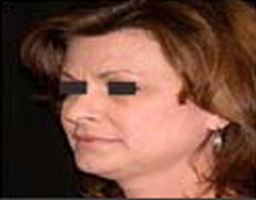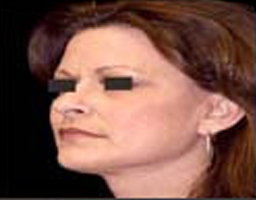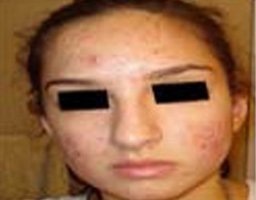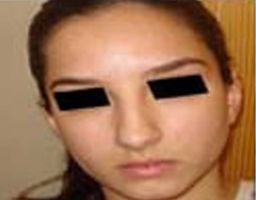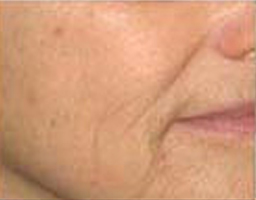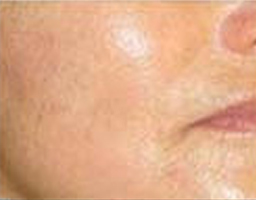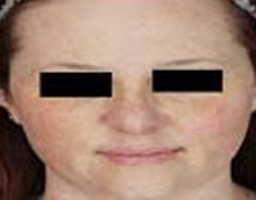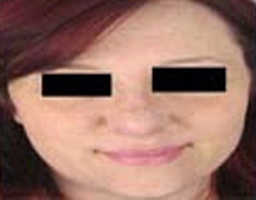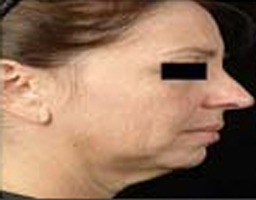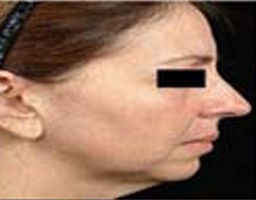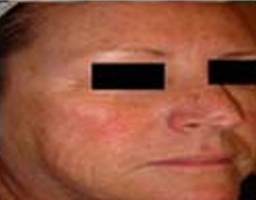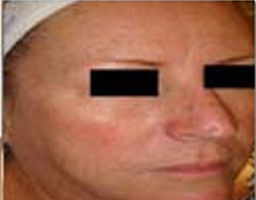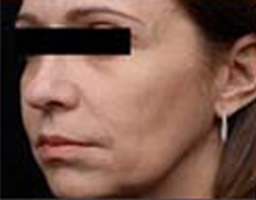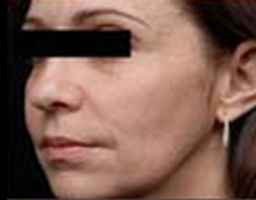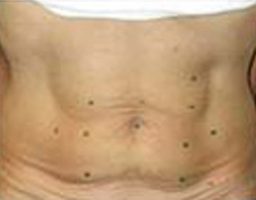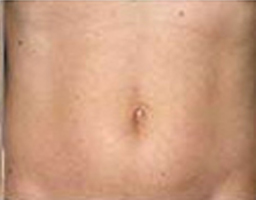Tanning Treatment in Delhi at Sculpt India Clinic is designed to effectively reduce sun tan, uneven skin tone, and pigmentation caused by UV exposure. Using advanced dermatological treatments and medical-grade technologies, this procedure helps restore the skin’s natural brightness and clarity. Our expert dermatologists create personalised treatment plans to suit different skin types and concerns. With safe protocols, modern equipment, and proven results, Sculpt India Clinic is a trusted choice for effective tanning treatment in Delhi.
Tanning Treatment in Delhi
Tanning Treatment
Tanning is the process of darkening or bronzing the skin, usually by exposing it to the sun or other sources of ultraviolet (UV) radiation. When the skin is exposed to UV rays, it triggers the production of melanin, which is the pigment that gives skin its color. Melanin is produced by cells called melanocytes, and it absorbs UV radiation to protect the skin from damage.
Tanning can occur naturally through exposure to sunlight, but it can also be achieved using artificial tanning methods, such as tanning beds or spray tans. However, excessive exposure to UV radiation can be harmful to the skin and increase the risk of skin cancer, premature aging, and other skin damage. It is important to practice safe sun exposure and avoid overexposure to UV radiation.
How Does Tanning Happen?
Tanning occurs when the skin is exposed to ultraviolet (UV) radiation from the sun or other sources such as tanning beds or lamps. There are two types of UV radiation that can penetrate the skin: UVA and UVB.
When the skin is exposed to UVA and UVB rays, it triggers the production of melanin in the skin. Melanin is the pigment that gives skin its color, and it is produced by specialized cells called melanocytes. When the skin is exposed to UV radiation, the melanocytes produce more melanin to protect the skin from further damage.
The increased production of melanin causes the skin to darken or tan. The tanning process can take several hours to days to develop, depending on the intensity of the UV radiation, the person’s skin type, and other factors such as the use of sunscreen or other protective measures.
It’s important to note that excessive exposure to UV radiation can be harmful to the skin and increase the risk of skin cancer, premature aging, and other skin damage. It’s important to practice safe sun exposure and avoid overexposure to UV radiation.
Causes & Symptoms of Skin Tanning:
The primary cause of skin tanning is exposure to ultraviolet (UV) radiation from the sun or other sources such as tanning beds or lamps. When the skin is exposed to UV radiation, it triggers the production of melanin in the skin, which causes the skin to darken or tan.
Symptoms of skin tanning can vary depending on the individual’s skin type, the intensity of the UV radiation, and the duration of exposure. Common symptoms of skin tanning include:
- Darkening or bronzing of the skin
- Uneven skin tone or patchiness
- Dry or flaky skin
- Itching or redness of the skin
- Sunburn or blistering
- Premature aging, such as wrinkles or age spots
Why Should You Treat Your Tanned Skin?
Tanning Treatment in Delhi is important because prolonged exposure to ultraviolet (UV) radiation from the sun or other sources can cause damage to the skin, even if you don’t immediately notice any symptoms.
The following are some of the reasons why you should consider tanning treatment in Delhi:
- Replenish moisture: Exposure to UV radiation can cause the skin to become dehydrated and dry. Treating tanned skin with moisturizers can help to replenish the skin’s moisture levels, improving the texture and overall health of the skin.
- Prevent premature aging: Excessive exposure to UV radiation can accelerate the aging process, causing wrinkles, fine lines, and age spots. Treating tanned skin with anti-aging products can help to minimize the signs of aging and keep the skin looking youthful.
- Protect against further damage: Once the skin has been tanned, it is more susceptible to damage from UV radiation. Treating the skin with sunscreen or other protective measures can help to prevent further damage and protect the skin from harmful UV radiation.
Overall, these are the best tanning treatments to maintain the health and appearance of your skin, and to reduce the risk of long-term damage such as premature aging and skin cancer.
Sun Tan Removal Treatments
There are several sun tanning treatments in Delhi available that can help to lighten or remove a tan from the skin. Here are some of the best tanning treatment options:
Chemical peels: A chemical peel involves applying a chemical solution to the skin, which exfoliates the outer layer of skin cells and promotes the growth of new, lighter skin cells. This can help to remove a tan and lighten the skin.
Microdermabrasion: Microdermabrasion involves using a special device to exfoliate the skin and remove the outer layer of dead skin cells. This can help to lighten the skin and improve its texture.
Laser treatment: Laser treatment uses focused light energy to remove the outer layer of skin cells and promote the growth of new, lighter skin cells. This can help to remove a tan and lighten the skin.
It’s important to note that some of these tanning treatments in Delhi may require multiple sessions to achieve the desired results, and they may also have side effects or risks. It’s important to talk to a dermatologist or other medical professional before starting any sun tan removal treatment to ensure that it is safe and appropriate for your skin type and condition.
What to expect from a Tanning Removal treatment?
The results of a tanning treatment in Delhi can vary depending on the type of treatment and the individual’s skin type and condition. Here are some general expectations for different types of tan removal treatments:
Chemical peels: After a chemical peel, the skin may appear red, irritated, and dry for several days. It may also peel or flake as the outer layer of dead skin cells sloughs off. Over time, the skin should become lighter and brighter in appearance.
Microdermabrasion: After a microdermabrasion treatment, the skin may appear red and irritated for a few hours to a day. It may also feel slightly rough or dry. Over time, the skin should become smoother and lighter in appearance.
Laser treatment: After a laser treatment, the skin may appear red, swollen, and tender for several days. It may also peel or flake as the outer layer of dead skin cells sloughs off. Over time, the skin should become lighter and brighter in appearance. This is widely considered as one of the best tanning treatment options.
It’s important to note that some tanning treatments in Delhi may require multiple sessions to achieve the desired results, and the results may not be permanent if the skin is exposed to UV radiation again.
Additionally, some treatments may have side effects or risks, so it’s important to talk to a dermatologist or other medical professional before starting any treatment.
What Is Pigmentation?
Pigmentation refers to the natural color of the skin, which is determined by the amount and type of pigments present in the skin. The most common pigments in the skin are melanin, carotene, and hemoglobin.
Melanin is the primary pigment responsible for skin color, and it is produced by special cells called melanocytes. The amount and type of melanin produced by melanocytes is determined by genetics, but it can also be influenced by environmental factors such as UV radiation
Pigmentation can also refer to an abnormal or uneven distribution of pigments in the skin, which can result in areas of darker or lighter skin. This can be caused by various factors, such as hormonal changes, sun exposure, aging, certain medications, or medical conditions such as vitiligo.
Hyper-pigmentation is a common form of abnormal pigmentation that occurs when the skin produces too much melanin, resulting in areas of darkened skin. This can be caused by factors such as sun damage, inflammation, acne, or hormonal changes.
Hypo-pigmentation is another form of abnormal pigmentation that occurs when the skin produces too little melanin, resulting in areas of lighter skin. This can be caused by conditions such as vitiligo, albinism, or certain types of skin damage or inflammation.
Treatment for pigmentation disorders may vary depending on the underlying cause and severity of the condition. Options may include topical treatments such as bleaching creams, laser therapy, or in some cases, surgical procedures.
It’s important to consult with a dermatologist or other medical professional for an accurate diagnosis and appropriate treatment plan. Come to our clinic if you’re looking for Pigmentation treatment in Delhi
Different Kinds of Tanning Removal Treatment:
Photo Facial
Photo facial, also known as intense pulsed light (IPL) therapy or photo-rejuvenation, can be an effective treatment for tan removal. The IPL technology used in photo facial treatments targets the melanin in the skin, which is responsible for skin coloration and is also the pigment responsible for tanning.
During a photo facial for tan removal, the IPL device emits pulses of light that are absorbed by the melanin in the skin. This causes the melanin to break down and be absorbed by the body, leading to a reduction in skin pigmentation and an improvement in the overall appearance of the skin. This process can be particularly effective for removing sunspots and other types of hyper-pigmentation caused by excessive sun exposure.
Photo facial treatments for tan removal typically require a series of sessions spaced several weeks apart to achieve optimal results. The number of treatments required can vary depending on the individual’s skin condition and the extent of the tan. After treatment, it is important to avoid sun exposure and use sunscreen to protect the skin, as the treated area may be more susceptible to sun damage.
It is important to have the photo facial treatment performed by a trained and experienced medical professional to ensure safe and effective results. A consultation with a dermatologist or other medical professional can help determine if photo facial treatment is the best tanning treatment option for tan removal and provide guidance on the best treatment plan for individual needs.
Does Photo facial lighten skin?
During a photo facial, the IPL device emits pulses of light that are absorbed by the melanin in the skin, causing it to break down and be absorbed by the body. This can lead to a reduction in skin pigmentation and an improvement in skin tone and texture. Photo facial can also stimulate collagen production, which can help to improve the elasticity and firmness of the skin, leading to a more youthful appearance.
However, it is important to note that photo facial is not a skin lightening treatment per se, but rather a treatment that can reduce hyper-pigmentation and improve overall skin health and appearance. The degree to which a photo facial can lighten the skin will depend on the individual’s skin condition and the extent of the hyper-pigmentation. Join us at Sculpt to get the best pigmentation treatment in Delhi.
Is photo facial good for Indian skin?
Photo facial, or intense pulsed light (IPL) therapy, can be a good option for Indian skin. IPL targets melanin in the skin, which is responsible for skin coloration and can also cause hyper-pigmentation, such as sunspots, age spots, and melasma. Indian skin is often more prone to hyper-pigmentation due to increased melanin production.
However, it is important to have the photo facial treatment performed by a trained and experienced medical professional who has experience working with Indian skin. Indian skin can be more prone to post-inflammatory hyper-pigmentation, which is a darkening of the skin that can occur after inflammation or injury to the skin. The IPL settings used for photo facial treatment should be carefully adjusted to avoid causing further hyper-pigmentation or skin damage.
It is also important to note that photo facial is not recommended for individuals with darker skin tones, as the IPL technology can sometimes cause hypopigmentation, which is a lightening of the skin that can be permanent.
Overall, photo facial can be a safe and effective option for Indian skin when performed by a qualified medical professional who has experience working with diverse skin types.
IPL Technique
Intense pulsed light (IPL) therapy, also known as photo rejuvenation, can be an effective technique for tan removal. IPL targets the melanin in the skin, which is responsible for skin coloration and is also the pigment responsible for tanning.
During an IPL treatment for tan removal, a handheld device is used to emit pulses of light onto the skin. The light is absorbed by the melanin in the skin, causing it to break down and be absorbed by the body. The pigmentation treatment in Delhi can lead to a reduction in skin pigmentation and an improvement in the overall appearance of the skin. IPL can be particularly effective for removing sun spots and other types of hyper-pigmentation caused by excessive sun exposure.
IPL treatment for tan removal typically requires a series of sessions spaced several weeks apart to achieve optimal results. The number of treatments required can vary depending on the individual’s skin condition and the extent of the tan. After treatment, it is important to avoid sun exposure and use sunscreen to protect the skin, as the treated area may be more susceptible to sun damage.
It is important to have the IPL treatment performed by a trained and experienced medical professional to ensure safe and effective results. A consultation with a dermatologist or other medical professional can help determine if IPL treatment is the best tanning treatment option for tan removal and provide guidance on the best treatment plan for individual needs.
Can IPL lighten dark skin?
Intense pulsed light (IPL) therapy is generally not recommended for individuals with darker skin tones, as the IPL technology can sometimes cause hypo-pigmentation, which is a lightening of the skin that can be permanent. IPL works by targeting melanin in the skin, which is responsible for skin coloration and can also cause hyper-pigmentation, such as sun spots, age spots, and melasma. Darker skin tones have more melanin and therefore may be more sensitive to IPL treatment.
While some studies have shown that IPL can be effective in treating hyper-pigmentation in individuals with dark skin, there is a risk of causing hypo-pigmentation, particularly if the IPL settings are not carefully adjusted to avoid damaging the skin. Therefore, IPL treatment for individuals with dark skin should only be performed by a trained and experienced medical professional who has experience working with diverse skin types.
It is important to have a consultation with a dermatologist or other medical professional to determine if IPL treatment is safe and appropriate for individuals with darker skin tones. Other options for treating hyper-pigmentation in individuals with darker skin tones may include chemical peels, microdermabrasion, or topical treatments. If you want to find out more about this procedure, consult out experts to choose the best pigmentation treatment in Delhi
Does IPL remove dark spots permanently?
Intense pulsed light (IPL) therapy can be effective in reducing the appearance of dark spots, but it does not typically remove them permanently. IPL targets melanin in the skin, which is responsible for skin coloration and can also cause hyper-pigmentation, such as sun spots, age spots, and melasma. IPL can break down the excess melanin in the dark spots, causing them to fade over time.
The results of IPL treatment for dark spots can vary depending on the individual’s skin type, the extent of the hyper-pigmentation, and the number of treatments received. IPL treatment typically requires a series of sessions spaced several weeks apart to achieve optimal results. After treatment, it is important to avoid sun exposure and use sunscreen to protect the skin, as the treated area may be more susceptible to sun damage
While IPL can be effective in reducing the appearance of dark spots, it does not typically remove them permanently. Maintenance treatments may be necessary to maintain the results of the treatment. Additionally, it is important to address the underlying cause of the dark spots, such as excessive sun exposure or hormonal changes, to prevent further hyper-pigmentation from developing.
Overall, IPL can be a safe and effective option for reducing the appearance of dark spots, but it is important to have the treatment performed by a trained and experienced medical professional and to have realistic expectations about the results.
What is the ideal skin tone for IPL?
The ideal skin type for IPL (intense pulsed light) treatment is type I to type IV, which includes individuals with fair to medium skin tones. IPL works by targeting melanin in the skin, which is responsible for skin coloration and can also cause hyper-pigmentation, such as sun spots, age spots, and melasma. Darker skin tones have more melanin and therefore may be more sensitive to IPL treatment.
IPL treatment can be less effective and riskier for individuals with darker skin types (type V and VI), as there is a higher risk of skin damage, including hypo-pigmentation or hyper-pigmentation. Hypopigmentation is a lightening of the skin that can be permanent, while hyper-pigmentation is a darkening of the skin that can also be permanent.
Therefore, individuals with darker skin tones are typically not considered good candidates for IPL treatment and may be advised to consider other treatment options, such as chemical peels, microdermabrasion, or topical treatments.
It is important to have a consultation with a dermatologist or other medical professional to determine if IPL treatment is safe and appropriate for individuals with darker skin tones.
Does IPL make skin brighter and glow?
IPL (Intense Pulsed Light) treatment can help to improve the overall appearance of the skin, including making it look brighter and more glowing. IPL works by targeting the melanin in the skin, which is responsible for skin coloration and can also cause hyper-pigmentation, such as sun spots, age spots, and melasma. By breaking down excess melanin in the skin, IPL can help to reduce the appearance of hyper-pigmentation, revealing a clearer, brighter complexion.
In addition, IPL can stimulate collagen production in the skin, which can help to improve the texture and tone of the skin, making it look smoother and more radiant. IPL can also help to reduce the appearance of fine lines, wrinkles, and other signs of aging.
However, it is important to note that while IPL can improve the overall appearance of the skin, it is not a cure-all for all skin issues. Other factors such as diet, lifestyle, and genetics can also play a role in the health and appearance of the skin. It is important to have a consultation with a trained and experienced medical professional to determine if IPL treatment is right for your skin concerns and goals.
Medicated Facial
A medicated facial is a facial treatment that uses specialized products with active ingredients to treat specific skin concerns. The active ingredients can vary depending on the desired outcome, but commonly include salicylic acid, glycolic acid, benzoyl peroxide, or retinoids.
Medicated facials are often recommended for individuals who have persistent or severe acne, blackheads, and other blemishes. The facial may involve cleansing, exfoliating, and applying a medicated mask or serum to the skin. The process can also include extractions to remove impurities from the pores
It is important to note that medicated facials should only be performed by a licensed esthetician or dermatologist who can evaluate your skin and recommend the appropriate treatment. It is also essential to follow the aftercare instructions carefully to avoid any adverse effects.
This pigmentation treatment in Delhi will essentially help to improve the skin condition such as if you possess acne or are prone to developing acne. With the utilization of a series of special anti-acne serums and cleansers, this treatment aims to calm down acne inflammation to a large extent and hence forth reduces the amount of comedones (whiteheads and blackheads). This method is often favored by medical professionals and can be considered as of the best tanning treatment options for pigmentation treatment in Delhi.
Is medical facial good for skin?
Yes, a medicated facial can be beneficial for the skin, especially for those who have specific skin concerns such as acne, blackheads, and other blemishes. The active ingredients used in a medicated facial can help to unclog pores, reduce inflammation, and promote cell turnover, which can lead to clearer, smoother, and more radiant skin.
However, it is important to note that not all medicated facials are suitable for everyone, and some active ingredients may cause irritation or allergic reactions. Therefore, it is important to consult with a licensed esthetician or dermatologist to determine if a medicated facial is right for you and what specific products and ingredients will be best for your skin type and concerns.
Additionally, it is important to follow proper aftercare instructions, which may include avoiding sun exposure, using gentle skincare products, and avoiding certain activities such as vigorous exercise, steam rooms, and saunas for a few days after the treatment to ensure the best results and minimize the risk of irritation.
Difference between a medical facial & a regular facial?
The main difference between a medical facial and a regular facial is the level of customization and the use of medical-grade products with active ingredients. Here are some key differences between the two:
Customization: Medical facials are tailored to address specific skin concerns such as acne, hyper-pigmentation, fine lines, and wrinkles. In contrast, regular facials are usually more generalized and focus on providing a relaxing, pampering experience.
Products: Medical facials use medical-grade products with active ingredients such as salicylic acid, glycolic acid, retinoids, and antioxidants. These products are designed to penetrate the skin at a deeper level and target specific concerns. In contrast, regular facials typically use more basic skincare products that are designed to hydrate and nourish the skin.
Equipment: Medical facials may also use specialized equipment such as microdermabrasion, chemical peels, and light therapy to enhance the effectiveness of the treatment. These treatments can help to improve skin texture, reduce the appearance of fine lines and wrinkles, and improve skin tone and clarity. Regular facials may also use some equipment, but it is usually less advanced and less focused on specific skin concerns.
Professional requirements: Medical facials must be performed by a licensed medical aesthetician, nurse, or dermatologist who has received specialized training in the use of medical-grade products and equipment. Regular facials, on the other hand, can be performed by licensed estheticians who have received basic training in skincare.
Overall, while both medical facials and regular facials can be beneficial for the skin, medical facials are typically more focused and customized, using more advanced products and equipment, and are performed by licensed medical professionals.
Anti–tan Facial
Tanning is a very common issue encountered by people. Anti-tan facial helps to improve the skin conditions, makes it beautiful and recoup the original complexion. Tanning just not happens in the summers but can be an equal cause of worry in the winters as well.
Even in winter season, if one goes sunbathing for long hours to evade cold, then tanning can be a very common issue in such circumstances. Extreme exposure to the sun can tan your skin regardless of the season or time of day.
This tan removal treatment uses lactic peel-based therapy particularly developed to deal with the pigmentation of skin due to exposure to the sun. This pigmentation treatment in Delhi is used with lactic milk extract, which is milder and gentler than its synthetic counterparts.
This removes dead cells and helps revitalize cells, thus relieving your skin of tan. Anti-tan facial is fit for all types of skin color, still if the patient has some history; they need to discuss it with the doctor before undergoing treatment.
Hydrating Facial
Hydrating facial is best suitable for dry and dehydrated/unhealthy, abandoned skin. Skin loses its moisture because of many reasons that can set it on the pathway of premature aging.
The hydra facial is a unique skin-hormone treatment which provides thoroughgoing protection to the skin against free radicals and damage caused by pollution/sun.
This treatment helps to renovate the delicate balance of the skin and makes skin look fresh, clear and smooth. Its powerful constituents work to penetrate deep into skin and moisturize on a more strong level. The hydrating facial overall moisturizes the skin deeply and further guards it against dryness. This facial is excellent for people of all ages who wish to restore their skin’s Natural moisture.
Milk Peel
The milk peel is a very simple and speedy procedure which is generally the first peel that people choose. The milk peel is best for early signs of aging, widened pores, unstable texture, sun damage, age spots, dryness, and fine lines.
This peel is exceedingly recommended for oily skin or acne-prone skin. It is used for reduction of wrinkles, oil regulation, spot treatment, dull complexion, stimulation of the epidermal and brings an overall smoother effect for softer skin which will give skin and face a more youthful look.
A session usually lasts for 15-30 minutes, and it consists of several steps. First, the skin is cleaned with a pre-peel cleanser. Then, the product is spread all over the area. During the application time, the patient can feel a slight tingling sensation which means that the product is working well on the skin.
During the treatment, a heating sensation is considered normal. A few days after the treatment, fine desquamation is expected, which is normal. Skin looks instantaneously refreshed but the real revitalizing effect comes out with time.
Super Peel
A facial peel can be efficaciously used as a regular-skin-care treatment. It repairs sun-damaged skin, treats acne and mild acne scarring, wrinkles and to improve overall health, radiance and look of your skin.
A facial peel is not meant to be a solution to decrease appearance of blood vessels on the skin, alter pore diameter even though the pores may really appear less pronounced after treatment.
A facial peel is primarily a cosmetic chemical treatment which is executed to reduce the appearance of wrinkles, blemishes, age spots, light scarring, and any other skin abnormalities on the face.
Facial peel is also termed a chemical peel. Facial peels can mend the appearance of fine lines and wrinkles on the skin and give new life to sun-damaged skin.
Allergic reactions are likely with topical facial peel treatments. Hence, this should be done in the presence of experts. They generally at preliminary stage of treatment, test the small patch of skin before proceeding further. If everything is fine and no allergic signs are detected, then they move ahead with the treatment. It is suggested to take it at an interval of every two weeks.
Looking to get rid of your tan and achieve brighter, more even skin? SculptIndia Clinic in Delhi offers effective and safe tanning treatments using the latest technology and techniques.
Our team of experienced dermatologists and technicians will work with you to develop a personalized treatment plan tailored to your specific skin concerns and goals. We offer a range of the best tanning treatments, including IPL (Intense Pulsed Light) therapy and photo facials, which can help to reduce the appearance of hyper-pigmentation and sun damage.
At SculptIndia Clinic in Delhi, we use state-of-the-art equipment and the latest techniques to ensure optimal results with minimal downtime. Our team is committed to providing the highest level of care and attention to each and every patient, ensuring that you achieve the best possible outcomes.
Don’t let a tan hold you back from achieving the glowing, radiant skin you deserve. Contact SculptIndia Clinic today to schedule a consultation for tanning treatment in Delhi and learn more about our services.
Frequently Asked Questions (FAQs)
-
Are these treatments safe?
Most of these treatments are generally safe if done correctly and under the guidance of a qualified professional. However, it’s important to keep in mind that each person’s skin reacts differently to treatments, so it’s always recommended to do a patch test before applying any product or treatment to your entire body.
Exfoliation is generally safe, but it’s important not to overdo it or use abrasive scrubs, which can cause irritation and damage to the skin. It’s also important to avoid exfoliating sunburned or sensitive skin.
-
What precautions do we need to take during these treatments?
Here are some precautions to keep in mind before and during tanning removal treatments:
Avoid sun exposure: It’s important to avoid sun exposure before and after tanning removal treatments, as the skin may be more sensitive and prone to damage. Wear protective clothing and use a broad-spectrum sunscreen with SPF 30 or higher.
Consult with a professional: It’s always recommended to consult with a dermatologist or skincare professional before undergoing any tanning removal treatment, especially if you have sensitive skin or any underlying skin condition.
Be patient: Tanning removal treatments may take time to show results, so be patient and follow the treatment plan as recommended by the professional.
-
Can dermatologist lighten your skin?
Yes, dermatologists can help lighten dark skin through various treatment options. The specific treatment recommended will depend on the cause of the darkening and the individual’s skin type.
Hyper-pigmentation, which is a common cause of dark skin, can be treated with topical creams containing ingredients such as hydroquinone, retinoids, or azelaic acid. Chemical peels, microdermabrasion, and laser treatments can also be effective in lightening dark areas of the skin.
It’s important to note that any treatment to lighten dark skin should be done under the guidance of a dermatologist, as some treatments can cause further skin damage if not used correctly
-
How can I permanently get rid of sun damage?
Sun damage to the skin can be permanent, but there are steps you can take to reduce the appearance of sun damage and prevent further damage from occurring. Here are some ways to help:
Consider laser or light therapy: Laser and light therapies can help reduce the appearance of sun damage, including dark spots, fine lines, and wrinkles.
-
What do celebs use to lighten their skin?
Celebrities have been reported to use skin lightening products, and some of the common ingredients used in these products include:
Kojic Acid: This is a natural skin lightening agent that is derived from fungi. It works by inhibiting the production of melanin in the skin.
Retinoids: These are Vitamin A derivatives that can help to improve the texture and tone of the skin by increasing cell turnover and reducing the appearance of hyper-pigmentation.
Glutathione: This is an antioxidant that is naturally produced in the body and has been found to have skin lightening effects when taken in high doses.
It is important to note that some skin lightening products may contain harmful ingredients such as mercury, steroids, or other toxic substances, which can cause serious health problems.
Therefore, it is recommended to consult a dermatologist before using any skin lightening products and to use only products that have been approved by regulatory authorities.
-
Why do I suddenly look tanned?
If you suddenly look tanned, it is likely due to an increase in your skin’s melanin production, which is the pigment responsible for the color of your skin. This increase in melanin production can occur due to a variety of reasons, including:
Sun exposure: If you have spent more time in the sun than usual, your skin may have produced more melanin in response to the UV radiation, resulting in a tan.
Changes in hormones: Hormonal changes, such as those that occur during pregnancy or menopause, can sometimes cause an increase in melanin production, resulting in skin darkening or hyper-pigmentation.
Certain medications: Some medications, such as birth control pills or antibiotics, can cause an increase in melanin production, resulting in skin darkening.
It’s important to note that excessive exposure to UV radiation, whether from the sun or tanning beds, can have negative consequences for skin health, including an increased risk of skin cancer. Therefore, it’s important to practice safe sun habits, such as wearing sunscreen, seeking shade, and limiting sun exposure during peak hours.
-
Which treatment is best for tanning?
There are several medical treatments available for tan removal that can be performed by a dermatologist or trained professional. Some of the best medical treatments for tan removal include:
. Chemical peels
. Laser therapy
. Microdermabrasion
. Chemical depigmentation
-
Can tan be removed permanently?
Tan can be removed, but it is not typically a permanent solution. The skin naturally sheds dead skin cells and regenerates new ones, which can gradually fade a tan over time. Additionally, using skin-lightening products and undergoing certain medical treatments can help to fade a tan.
If you are concerned about a persistent tan or changes in skin pigmentation, it is important to consult with a dermatologist or trained professional to determine the best course of action for your individual skin type and concerns.
-
How to remove tan in clinic?
There are several ways to remove tan in a clinic, and the best method will depend on the severity of the tan and the individual’s skin type. Here are some common treatments that a dermatologist or trained professional may recommend for tan removal:
Chemical peel: A chemical peel involves applying a chemical solution to the skin that exfoliates and peels off the top layer of skin. This can help to remove a tan and reveal brighter, smoother skin underneath.
Laser therapy: Laser therapy uses intense pulsed light (IPL) to target pigmentation in the skin and break it down, which can help to fade a tan. This treatment is often used for more severe or stubborn tans.
Microdermabrasion: Microdermabrasion involves using a device that blasts tiny crystals onto the skin to remove dead skin cells and promote cell turnover. This can help to fade a tan and reveal fresher, brighter skin.
Chemical depigmentation: Chemical depigmentation is a more intensive treatment that involves applying a chemical agent to the skin to permanently remove pigment. This treatment is typically used for more severe cases of hyper-pigmentation, including tans.
-
Treatment to remove Goa tan with the help of Photo Facial?
A photo facial, also known as intense pulsed light (IPL) therapy, can be effective in removing a Goa tan. IPL therapy works by emitting pulses of light that target the melanin in the skin and break it down, which can help to fade a tan and even out skin tone.
-
Here are the steps involved in removing a Goa (or any other) tan with IPL therapy:
Consultation: Schedule a consultation with a licensed IPL technician or dermatologist to determine if IPL therapy is the right treatment for your Goa tan. They will evaluate your skin type, the severity of your tan, and any other underlying skin concerns.
Preparation: Before the IPL treatment, the technician or dermatologist will clean and prepare your skin. They may also apply a numbing cream to help with any discomfort during the treatment.
Treatment: During the IPL treatment, the technician or dermatologist will use a handheld device that emits pulses of light onto the skin. The light energy is absorbed by the melanin in the skin, breaking it down and fading the tan. The treatment can take anywhere from 15 to 30 minutes, depending on the size of the area being treated.
Aftercare: After the IPL treatment, the technician or dermatologist will apply a soothing cream or gel to the treated area to help with any redness or irritation. It is also important to avoid sun exposure and wear sunscreen to protect the skin from further damage.
It is important to note that IPL therapy may require multiple sessions to achieve optimal results, and it may not be suitable for all skin types. Therefore, it is crucial to consult with a licensed IPL technician or dermatologist to determine the best course of action for your individual skin type and concerns.

Book Appointment

